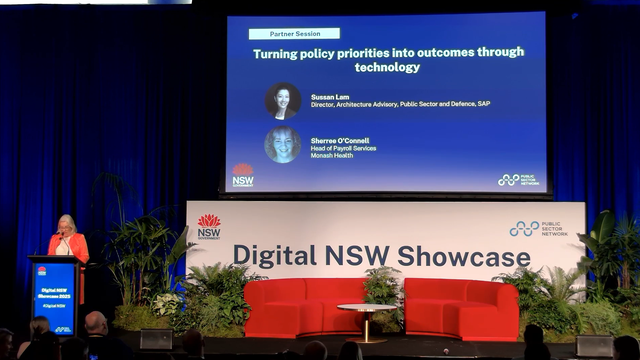

A vibrant, growing city
Innovation has become the buzzword of the current era, as the world slowly emerges from the pandemic. But some institutions have been innovating, creating and working with new technologies to develop imaginative solutions for many years. City councils are often at the forefront of such advances, and one municipality in Canada that is leading the way is the City of Edmonton in the province of Alberta. Catherine Sparks, the Director of Service Design at the City of Edmonton, says that in many ways, we are really a leader in the smart city space and other areas, and they are keen to share that knowledge with others.
One of the reasons why the City of Edmonton is such a trailblazer is because of circumstance. We are one of Canada’s fastest growing cities, with 1.4 million people and a growth rate of 4.8% since the last census. On top of that, the average age of Edmontonians is 36, with the largest portion of people aged 30 – 34. There are also many parks and green spaces, and although close to a quarter of all Albertans live in Edmonton, compared to Vancouver, with nearly 19,000 people per square kilometer, in Edmonton we have a population density of just 1,320 people per square kilometer. The point is that the city is young, vibrant, growing and not overcrowded, and thus these demographics factor into our decision-making and strategic planning.
A vision for the future
The City has developed a community vision for 2050, designed for Edmontonians to come and work together. The plan is to attract another million residents to Edmonton, and includes a Municipal Development Plan (MDP) and a Transportation Master Plan (TMP). But these are just plans for the future. In reality, the innovative advances are so critical to our city’s resilience and sustainability, that we believe that smart initiatives need to be a part of a current broader framework for innovation. At Edmonton, this means having an open mind and creative approach that leads to the implementation of incremental, significantly improved, new or disruptive processes or services that create value for our community. In other words, innovation is a call to action because we cannot do this alone. We must leverage the value of partnerships and utilize connected networks.
The City of Edmonton, like most municipalities, has goals centered around vibrancy, social wellness, climate resilience and economic prosperity. What differentiates municipalities is how far and how fast we are willing to advance change in these spaces as we drive implementation. In our case, we want to move these goals far and we want to start seeing immediate change. To achieve such lofty goals, this is where innovation comes in. A municipality can be a smart city by simply adhering to all the latest change initiatives. We want to do more than that.
“For us, innovation is the sum of all of these initiatives and the compounding effects between them, as well as a mind-set of driving improvement, that is essential about achieving these greater, broader, city goals for our community.” - Catherine Sparks, Director of Service Design, City of Edmonton
Creative solutions for the municipality
Technology is a driver of smart cities, but it is not the only tool, and for the purposes of these ‘compounding effects’, the City is leveraging other tools including partnerships, policies, data and processes. More importantly, we believe that we can spark more curiosity by redesigning our services by developing new solutions to complex challenges with a human-cantered design approach to capitalize on new opportunities.
For example, there are a number of so-called problem properties around the city, which are derelict or abandoned homes or vacant buildings and apartment blocks. These are being used by the city’s homeless or as social housing, but many of them pose a health risk to both tenants and surrounding residents. They are often unsafe and unhealthy. Because of these issues, there are regular calls to the emergency services and also to City Councillors. There was an immediate need to make change, so the City used a human-cantered design approach to ensure that we maintain the dignity of all of those involved. The technology solution was the creation of a data-led predictive modelling technology solution that can identify problems by demand for partner services. It allows partners (ie: emergency services, the municipality and social services) to see which problem properties are seeing an increase or decrease in calls for service, and then it initiates a plan to allocate resources accordingly. This tool aggregates data and displays it on interactive maps and tables. Whilst this solution won’t necessarily decrease the number of these problem properties, it will reduce the overall demand on the police, health services and city regulatory services, and it will improve the overall quality of life for those residents and in the surrounding areas.
Another example is what is known as Active Aurora, which is a joint project with other provincial governments, private industry and the federal government, to create a first network for connected vehicles in Canada. It is mostly designed to collect information from cell phone data via cars and roadside devices, and then that information is relayed back to drivers to let them know about pedestrians, unsafe speed, high collision locations, or whether or not they can safely make the next green light. It uses cutting edge technologies, but is a project that is much bigger than the City of Edmonton. However, involvement in Active Aurora gave us confidence to develop spin-off opportunities like the autonomous vehicle pilot in 2019. Edmonton became only the second city in Canada to test driverless cars, and this gave the City the compounding innovation and human capital that we’re trying to harness and capture with the broader innovation framework.
With this renewed confidence, the City was ready to reinvent our approach and processes so that we can advance innovation in our municipal environment without red tape. To get to that point, there is now the City as a Lab approach, which is all about reducing red tape for the City to explore new innovative partnerships with external organizations. The lab is for those with existing challenges or problems, but also for those who have a unique business idea or wish to leverage their relationship with the City. Projects using aggregated cellular data to create geospatial visualizations, are already coming out of the lab, along with other smaller and less ambitious projects.
Importantly, these projects, including those from the lab, are in line with our city plan and our economic development plan, and are part of the overall collaborative innovation environment, but the City now recognizes that we are not at the center of this environment. This is because in order to harness grassroots, citizen-centric innovation, we have to work with partners to create a movement of community change. The City of Edmonton has therefore made a conscious decision to be one with the environment and not the convener of the environment. This will be critical to our innovation success going forward. Only then can the City truly build our capacity to explore new ideas, experiment with new approaches and learn from these experiences. This requires curiosity, courage and openness, but this new mind-set will hopefully leverage existing smart city concepts and apply the tools to improve civic services and enhance the quality of life across all of the City of Edmonton.
Featured speaker
- Catherine Sparks, A/Branch Manager Service Innovation & Performance Financial & Corporate Services, City of Edmonton
Interested in more insights from Catherine? Check out our upcoming Future Cities Roadshow


































